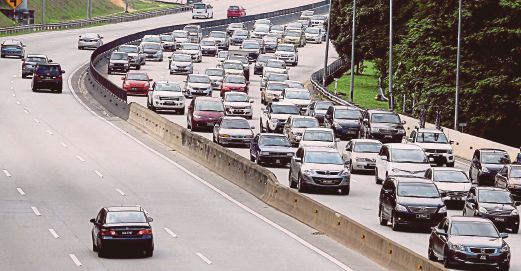Woes of the 240km stretch
Category: Publication - NST
APART from the occasional congestion during festive seasons, the drive along the East Coast Expressway (ECE) has always been smooth.
The opening of the ECE 1 from Karak to Kuantan in August 2004 has benefited the people in the east coast, particularly those in Pahang.
Built at a cost of RM1.3 billion, not many people remember the difficulties faced by the government to have the plan materialised.
It is interesting to note that the plan to build the highway from Karak to Kuala Terengganu was first announced in 1994 when the two-lane Kuala Lumpur-Karak road was being upgraded to an expressway.
The original concessionaire company for the project was a consortium formed by MMC Corporation Berhad, through its subsidiary Projek Lebuhraya Timur Sdn Bhd, MTD Group and Malaysian Resource Corporation Berhad. It was reported that the high cost involved had forced MTD Group and MRCB to withdraw from the consortium and the project was later affected by the Asian financial crisis in 1997.
It faced another setback when then prime minister Tun Dr Mahathir Mohamad announced that all expressway projects would be postponed as it was claimed that Malaysians were not ready to pay toll.
The Federal Government finally agreed to proceed with the project after pleas from the Pahang, Terengganu and Johor governments.
MTD Group was later appointed to implement the project and a new concession contract was signed in January 2001.
The construction began shortly afterward but it was limited to the first phase from Karak to Kuantan, after Pas strongly opposed the toll collection when they took over Terengganu in 1999. Pas even insisted on building its own toll-free highway but the plan had never materialised.
It is important to know the history of the expressway in order for us to appreciate its importance, which include boosting development in the East Coast Economic Region, which covers Kelantan, Terengganu, Pahang and Mersing in Johor.
ECE 1 is operated by Anih Berhad, a subsidiary of AlloyMtd, or formerly known as MTD Group.
As the concession holder, Anih Berhad is responsible for the entire 240km stretch of the expressway, comprising Karak Highway and ECE 1, from Gombak to Jabor, Terengganu.
Unknown to many, the company spends millions of ringgit annually to repair and replace structures that are damaged by irresponsible parties, apart from the customary maintenance works.
To repair and replace the damaged fences along the highway alone, the company has to spend nearly RM1 million every year.
Anih Berhad director Nik Fauzi Nik Hussein says some villagers cut open the fence to create a short-cut to other parts of the expressway.
“They fail to understand this could risk the lives of road users as livestock and wildlife animals could enter the highway through these holes.”
The company also spends RM4 million to repair and replace the copper cables and poles for the street lights, which are either stolen or damaged. In some cases, the vandals were electrocuted while trying to steal the copper wires while others were nabbed while unearthing the cables.
Nik Fauzi says the government spent some RM18 million to complete the country’s first light-emitting diode street lighting project on both sides of the stretch between the Gombak toll plaza and the Genting Sempah tunnel in early 2011.
Apart from curbing vandalism and thefts, the company is also taking proactive measures to stop human-trafficking syndicates from exploiting the highway.
Among others, Nik Fauzi says, the company has notified its patrol teams to inform the police if they see any vehicle with suspicious passengers plying the highway.
On June 16, four Myanmar men were killed while seven others, including a Malaysian driver, were injured after their car skidded and crashed into a road divider.
The 10 Myanmar nationals were believed to be among several groups of illegal immigrants who were travelling in separate vehicles along ECE 1. The incident exposed one of the syndicates that use the expressway to transport illegal immigrants from the east coast to the Klang Valley.
The challenges faced by the concession holder show that there are those among us who do not know how to appreciate public facilities built for them while some exploit them for their own interests.

The RM1.3 billion East Coast Expressway. It costs nearly RM1 million to repair and replace damaged fences along the highway every year.
--- Back to News Listing ---
